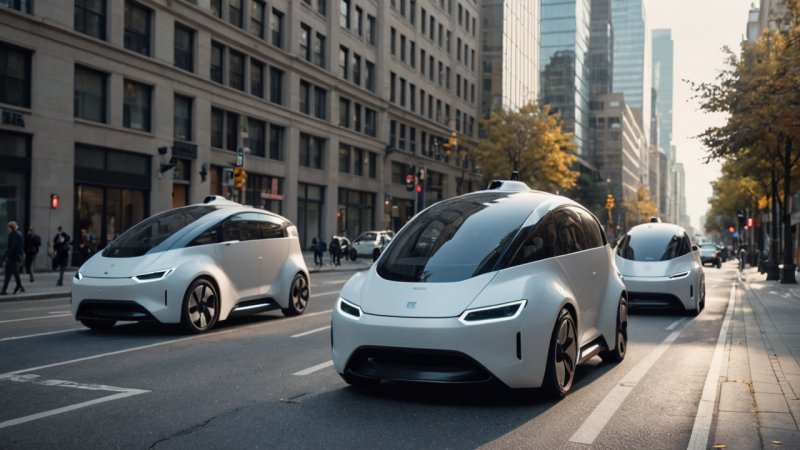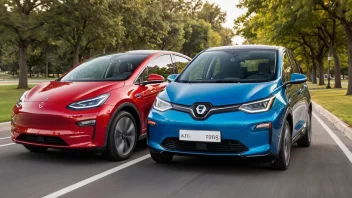The landscape of transportation is undergoing a seismic shift, driven by the rapid advancement of autonomous technology. As we stand on the brink of a new era, the potential for autonomous fleet services is becoming increasingly evident. These services, which utilize self-driving vehicles for logistics and transportation, promise to enhance efficiency, reduce costs, and revolutionize the way we think about mobility. In this article, we will explore the current state of autonomous fleet services, the technology that powers them, their applications across various industries, and the challenges that lie ahead in their widespread adoption.
Understanding Autonomous Fleet Services
Autonomous fleet services involve a network of self-driving vehicles working in tandem to perform transportation and delivery tasks. These fleets can range from passenger vehicles to trucks and delivery vans, all equipped with advanced sensors, cameras, and artificial intelligence (AI) systems that enable them to navigate without human intervention. The idea is to create a seamless and efficient transportation solution that can adapt to real-time data, optimizing routes and reducing delays.
The Technology Behind the Wheel
At the heart of autonomous fleet services are several key technologies. The most critical components include:
- LiDAR and Sensors: Light Detection and Ranging (LiDAR) systems use laser pulses to create a detailed 3D map of the vehicle’s surroundings, while additional sensors like cameras and radar provide complementary data about nearby obstacles and road conditions.
- Artificial Intelligence: AI algorithms process the data collected by sensors to understand the environment, make driving decisions, and predict the behavior of other road users.
- Vehicle-to-Everything (V2X) Communication: This technology allows vehicles to communicate with each other and with infrastructure, such as traffic lights and road signs, enhancing situational awareness and safety.
- Cloud Computing: Autonomous fleets rely on powerful cloud computing resources to analyze vast amounts of data in real time, enabling better decision-making and improved fleet management.
Applications Across Industries
Autonomous fleet services are not limited to personal transportation; they have far-reaching applications across various sectors:
- Logistics and Delivery: Companies like Waymo and Amazon are already testing autonomous delivery vans and drones to streamline last-mile delivery, aiming to cut costs and improve efficiency.
- Ride-Sharing: Autonomous ride-sharing services can reduce the need for personal vehicles, easing traffic congestion and lowering emissions in urban areas.
- Public Transportation: Autonomous buses and shuttles can enhance public transit systems by offering on-demand services, especially in underserved areas.
- Construction and Mining: Autonomous vehicles can operate in hazardous environments, transporting materials and equipment without putting human lives at risk.
Challenges to Overcome
Despite the promising future of autonomous fleet services, several challenges must be addressed before widespread adoption can occur:
- Regulatory Hurdles: Governments worldwide are still working to establish clear regulations governing the operation of autonomous vehicles, which can slow down deployment.
- Public Perception: Many people remain skeptical about the safety and reliability of self-driving technology, necessitating extensive public education and outreach.
- Technological Limitations: While the technology is advancing rapidly, it is not yet foolproof; adverse weather conditions and complex urban environments can still pose significant challenges to autonomous systems.
- Infrastructure Needs: To fully realize the potential of autonomous fleets, infrastructure improvements, such as dedicated lanes and smart traffic signals, will be necessary.
Looking Ahead
The future of autonomous fleet services is bright, with significant investments from major tech companies and automotive manufacturers fueling research and development. As technology continues to evolve, we can expect to see improvements in vehicle performance, safety, and efficiency. Additionally, collaborations between public and private sectors will be essential in creating a regulatory framework that fosters innovation while ensuring public safety.
In the coming years, as autonomous fleet services become more integrated into our transportation systems, we may witness a transformation in how goods and people are transported. The potential benefits include reduced traffic congestion, lower emissions, and enhanced accessibility to mobility solutions for everyone. As these technologies mature, the world may look very different from what we know today.
Conclusion
In conclusion, autonomous fleet services represent a groundbreaking advancement in automotive technology, with the power to reshape our transportation landscape. By leveraging cutting-edge technologies such as AI, V2X communication, and cloud computing, these services promise to enhance efficiency and reduce costs across multiple industries. However, to fully realize this potential, we must navigate regulatory, public perception, and technological challenges. As we move forward, a collaborative approach will be crucial in shaping a future where autonomous fleets operate seamlessly and safely within our communities.






